THE BIG READ: Trouble at the top of Mount Everest
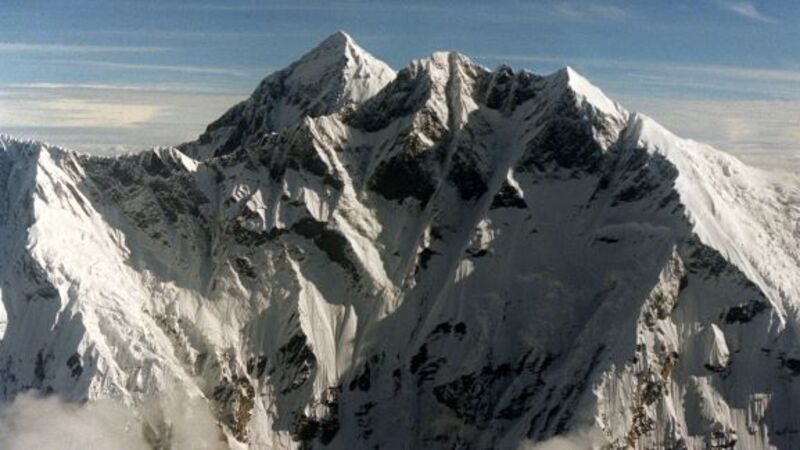
TSEWANG Paljor’s name is largely unknown by the hundreds of climbers that tramp past him during the short climbing season on Mount Everest. They call him ‘Green Boots’, on account of the fluorescent climbing boots that he wears. He lies half hidden by a dusting of snow in a limestone alcove at the 8,500m mark. This is exactly the spot where he died 18 years ago. Paljor was one of three Indian climbers who reached the summit in May 1996, but all of whom perished in blizzard conditions when they tried to descend.
The ‘Death Zone’, generally understood to begin at the 8,000m mark. There are only 14 mountains on the planet which extend beyond 8,000 meters. The oxygen levels up here are only a third of what they are at sea level. While climbers attempting to summit Everest spend about ten days at base camp acclimatising to the depleted oxygen levels, no human can survive for more than 48 hours in the Death Zone. You get in, get to the summit and get back. Rescue attempts are rare because they are adjudged unlikely to succeed. Attempts to recover bodies are even rarer, though they do happen.
In October 1979, Hannelore Schmatz, a German mountaineer, reached the summit but died of exhaustion on the way down. For years, she could be seen sitting, half supported by her backpack, eyes open, hair fluttering free just 100m from Camp IV, which is the final staging post before the last push to the summit.
You think of Everest, you think of snow and ice, but in actual fact it is a remarkably dry environment, which mummifies its victims, turning them into petrified, macabre landmarks. Five years later, a Sherpa and a Nepalese police inspector attempted to recover her body. Both were swept to their deaths by high winds, and it was high winds too that eventually bore Hannelore Schmatz’s body away and down the Kangshung face.
In all, there are some 150 bodies unclaimed on Everest. Not all are as prominently positioned as Tsewang Paljor is or Hannelore Schmatz was, but you cannot reach the world’s highest peak without passing dead bodies, frozen where they fell.
Corkman Pat Falvey, whose recent book The Summit, deals with tragedy on K2, has reached the summit of Everest twice, once from the Nepalese side to the south and once from the Tibetan side to the north. He has also lead expeditions to Everest base camp, which is where all attempts from Nepal begin. He understands the risks involved better than most.
“Fourteen of my own friends died within the Death Zone,” he says, “on this and other mountains.
“On Everest, it’s not that the bodies are everywhere. There are definitely bodies in open view and it is something that you have to take into your psyche. It’s very, very poignant when you do see a body. It triggers in you that this is not a walk in the park, and that this could be you if you get it wrong. And remember, most people who go into those places, as much as you try and fool yourself into thinking that it won’t happen to you, there is no guarantee. Sometimes it is a game of Russian roulette.”
Over 250 people have died on Everest since 1924, when seven Sherpas who had been working for doomed British explorer George Mallory perished along with him in the attempt. It’s not just the depleted oxygen levels that can get you of course. There are also falls, strokes, dysentery, hypothermia, pulmonary and cerebral edema, rock falls and glacial ice collapses. But the biggest killer of all is the avalanche.
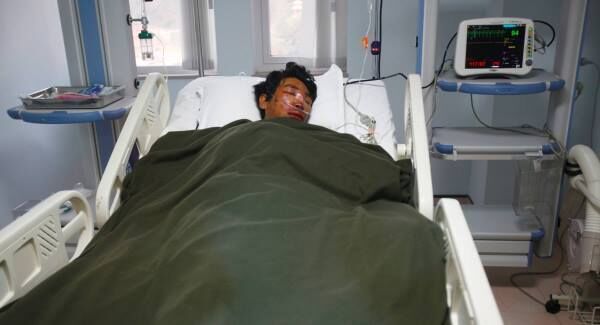
Early on the morning of April 18, a group of Sherpas were laying ropes and ladders over the Khumbu Icefall, long regarded as one of the most treacherous stages of the South Col route to Everest’s summit. An icefall lies at the head of a glacier and is analogous with a waterfall; the ice is chaotic, crevassed and constantly moving. The area where the accident happened has many nicknames, including the ‘Popcorn Field’.
“It’s equivalent to a load of loose popcorn as you go through,” says Falvey, “with some of the popcorn being about 40 feet in height.”
These Sherpas were the elite among the 600 guides and porters who ply their trade among the world’s highest peaks. They were the ‘icefall doctors’, laying out ropes and ladders to enable the groups of climbers at base camp to pass over the icefall and onwards towards the next camp.
At about 6.30am, a column of glacial ice suddenly broke free from Mount Everest’s western shoulder about a mile above the Khumbu ice fall. “It thundered down to the valley below at 100 odd miles per hour,” says Falvey. “When it hit the Khumbu icefall, it was like there was an earthquake, sending vibrations through the whole place, which in turn destabilised a lot of the ice blocks that had been sitting there. It’s those blocks that came down on top of the Sherpas.”
Sixteen people were killed instantly, and three were seriously wounded. Thirteen of the bodies were taken down the mountain while the remaining three remain entombed beneath the ice. It is unlikely they will ever be recovered.
The tragedy has cast the Everest industry in an ugly light. In the two weeks since the 16 men died, there have been violent stand-offs at base camp as tensions that have been simmering for years threaten to shut the Nepalese side of the mountain completely. Most particularly, Everest’s blackest day has given the world an insight into the lives of the Sherpa, the Himalayan ethnic group without whom the industry would be more or less impossible.
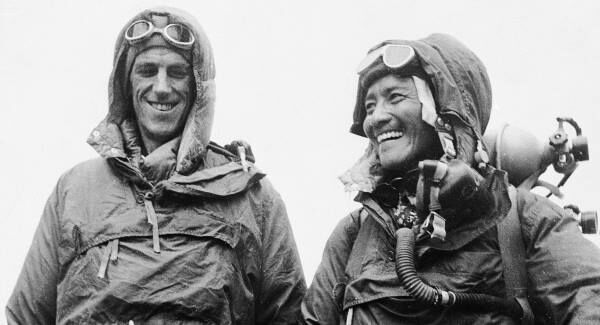
Since Edmund Hillary and Tenzing Norgay first successfully climbed Everest on May 29, 1953, more than 5,000 people have followed in their footsteps. Before tragedy struck, the Ministry for Tourism had issued 334 permits to climbers for this season alone.
As far back as 2003, Jamling Tenzing, son of Tenzing Norgay, claimed that the world’s highest mountain “had lost its spirit of adventure”. In an interview with The Guardian, he bemoaned the fact that rich thrill seekers with no climbing experience were now routinely reaching the summit.
“There are people going up there who have no idea how to put on crampons,” he told the newspaper. “They are climbing because they have paid someone $65,000. It is very selfish. It endangers the lives of others.”
Inevitably, some of the attempts on Everest are outlandish. In 2012, a New Yorker called Aydin Irmak with no climbing experience attempted to carry his 10 speed racer bicycle to the top, but had to be rescued during the descent. The same year, a Canadian called Shriya Shah-Klorfine made an infamous attempt at the summit. She had never climbed a mountain either; her training revolved around hiking with a heavy backpack. Shah-Klorfine died on her way back down on an infamous weekend in which 150 climbers were rushing to make the most of a brief window of good weather during a fragmented climbing season. There was a talk of a ‘traffic jam’ on the mountain, and climbers departing dangerously late for the summit. She was one of six people who died that weekend.
Most climbers, however, don’t attempt Everest without first acquiring plenty of experience on a range of lower peaks, many of which are often tougher climbs than Everest itself. Moreover, the price tag, even before you think of those pre-Everest climbs will be enough to deter the most determined eccentric. Any serious attempt will set you back anything from $40,000 to $100,000.
Regardless of whether the climbers are well trained enthusiasts or Jamling Tenzing’s rich thrill-seekers, the fact is that Mount Everest has become a vital element of the economy in a part of the world without much else going for it.
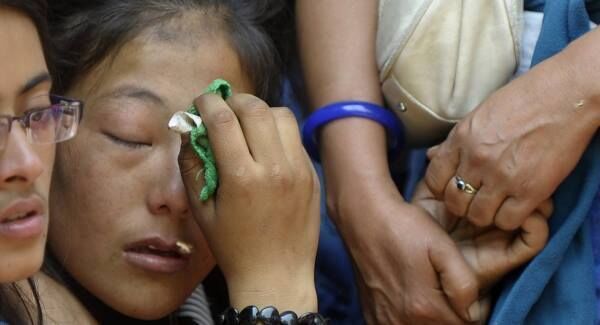
It’s an industry that relies heavily on the Sherpa, who identify both as an ethnic group and as a professional community. This is not, it should be said, a story about cheap local labour. Ethnic Tibetans like the Sherpa have a distinct genetic advantage over their western clients. Four years ago, the University of California at Berkeley conducted a study which found that the Sherpa genome had more than 30 separate genetic mutations, half of which are related to how the body uses oxygen.
In particular, Sherpa tend to have what’s known as the ‘super athlete gene’, so called because some variants of the gene are associated with improved athletic performance. In short, they are fitter, faster and stronger at higher, oxygen-poor altitudes.
Reportedly, a Sherpa can earn between $3,000 and $6,000 during the two-month climbing season. A good return in a country where the average annual income is $700 and the alternatives to climbing are farming or emigration. Neither emigrants nor farmers, however, run the kinds of risks that mountaineers run.
The Himalayan Database records that 174 Sherpas have died while working in the mountains of Nepal. At least as many have been seriously injured. Statistics maintained by the US Centre for Disease Control and Prevention indicate that a Sherpa working at base camp on Everest is almost 10 times more likely to die than a commercial fisherman, which is the next most dangerous non-military career. Moreover, a base camp Sherpa is three times more likely to die than an infantryman during the first four years of the Gulf War. Few economies in the world ask so much of one profession.
PAT FALVEY was back at base camp the day after the tragedy, leading a group of adventure tourists who flew out from Dublin in early April. He was well placed to witness the Sherpa’s grief and dismay turn slowly to anger. He says that far from the $3,000 minimum reportedly paid to a Sherpa during the climbing season, he met one summit veteran who could only secure $1,500. “What’s happening every year,” says Falvey, “is that competition is forcing people to cut prices, and where prices are being axed is in relation to the labour on the mountain, and that’s the Sherpa.”

While everyone who ventures onto the mountain voluntarily enters into what Falvey characterises as a game of Russian roulette, for the Sherpa, there are many more bullets in the barrel. It’s the Sherpa who set up the ropes and ladders across the Khumbu icefall, and it’s the Sherpa too who haul Westerners’ luggage to and fro beneath those hanging blocks of ice. A western climber will have to cross the Khumbu up to eight times in order to acclimatise. A Sherpa will make that trip between 30 and 40 times every year.
Another Irishman, Paul Devaney was also on Everest when the tragedy struck. He had been preparing to summit in completion of the seven peaks challenge, and he too watched base camp degenerate into confusion and hostility in the days following the avalanche.
A statement issued by Devaney said that a minority of “rebel Sherpa with an alternative agenda” had “successfully derailed” the climbing expeditions and that this group had been “taking full advantage of the grief, sorrow and apprehension felt by our Sherpa friends and families” as they struggled to come to terms with the loss of the 16 Sherpas.
He painted a picture of a charged and fractious atmosphere at base camp. “We sat and watched Sherpa meeting after Sherpa meeting taking place 50 metres from our tents with little understanding of what was being discussed, each meeting more vocal than the last.
“There was little evidence that the same level of engagement was going on between expedition owners and Sherpa leadership to regain control of the situation. We heard reports that in the aftermath of the avalanche, a group of rebel Sherpa was pushing their agenda to force Western expeditions off the mountain so that Sherpa can take control and flow more money down through the ranks.”
Tensions between Sherpa and Westerners have been bubbling under for some time. Last May, three veteran climbers clashed with a group of Sherpa at 7,000m. It was alleged that the trio broke mountain etiquette and knocked ice down on the Sherpa, who were laying lines for another group to follow. When the Westerners returned to camp, they claim to have been surrounded by a much larger group of Sherpa who punched and kicked them, forcing the abandonment of their summit attempt. The story that went around the world was of an unseemly ‘brawl’ on the slopes of Everest.
There’s also evidence of tensions emerging between the Sherpa themselves. It’s reported that the icefall doctors were told not to go back to work, filmmakers were told to put cameras away and one Western expedition had communication cables cut. Paul Devaney’s reports of fear and intimidation are corroborated by other sources.
One of the outcomes of those unintelligible meetings that Devaney witnessed was a 13-point petition which the Sherpa presented to the Minister for Tourism, requesting better treatment for those on whom the industry depends. Some of the demands were agreed to almost immediately. The government raised the value of medical and insurance policies for each Sherpa working on the mountain, and it also agreed to pay for the education of the children of the deceased.
Death benefit rose from an insulting $400 (the figure initially offered) to $15,000. It was also agreed that 5% of climbing fees would go to fund rescue services. Agreement faltered, however, on the issue of whether or not Sherpas should receive guaranteed pay, even in the event of the climbing season being cancelled.

There’s another, unexpected element to the fear and confusion that gripped the mountain in the days after the accident. Pat Falvey explains that traditional Sherpa revere Everest, or Chomolungma, as it is known locally, as a goddess. They believe that the avalanche was a manifestation of her anger. “That put a lot of people under stress because it’s bad enough going against nature, but when you go against the goddess herself, it’s sacrilege.”
Many of the older Sherpa needed no further reason to abandon base camp, regardless of their arrangements with Western climbing companies. Many of the younger Sherpa, however, don’t share the religious convictions of their elders, and were only too willing to step into the shoes.
Falvey recounts meeting Sherpa who told him of a mother heading to base camp to forbid her son from climbing the mountain, and another who threatened to throw herself into the Dudh Kosi river if her son did not return from base camp. At the same time, many of the younger Sherpas are precisely the ones who are being poorly compensated by ‘low end’ companies, companies which have been accused of cutting corners to undercut the competition. It is these Sherpa who are now agitating for better conditions.
The Nepalese government has been accused of failing to provide sufficient leadership to calm tensions. Nepal charges $10,000 per person to set foot on Everest; over the season, the exchequer makes an estimated $3.5m in permit fees.
In the aftermath of the tragedy, the government was reluctant to shut the mountain down, a move that would have left it liable for massive refunds to Western climbers. The fudge was to extend the permits for five years. The reality, of course, that many of those had their summit attempts thwarted will have made substantial sacrifices to get to that point. They will have spent their life savings or have taken prolonged career breaks. This was their one shot at Everest; simply holding a valid permit will not bring them back.
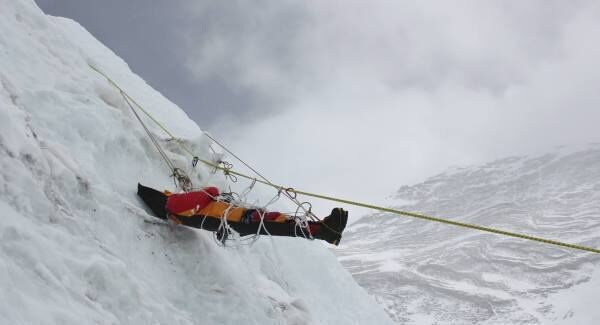
WHILE many of the international outfitters immediately cancelled their expeditions out of respect for the dead, others have hung on to see what happens. A group of 11 companies wrote to the Ministry of Tourism and Civil Aviation last week looking for assurances that the “threats of violence and injury” that occurred at base camp in the aftermath of the tragedy will not happen again. They’re also looking for an investigation into “recent violence” at the Everest base camp.
“We want a full report on the findings of each of these incidents,” the letter read. “If the issues are not resolved in a timely manner, operators will be unable to continue business with the country of Nepal and be forced to look elsewhere with their business ventures.”
It remains to be seen exactly what will emerge from the tragedy and the conflict that lingers in its wake, but it seems inevitable that the Sherpas will have to see some improvements in their conditions.
Last January, a New Zealand tour operator, Guy Cotter, applied for a permit to use a helicopter to transfer equipment above the Khumbu Icefall. The plan was to reduce the number of painfully slow crossings above the ice, but the Nepalese government failed to see the sense in the proposal and denied the permit. On April 18, the helicopter pilot Cotter had lined up to provide the service happened to be at base camp, and in a tragic irony, he flew multiple flights that day, rescuing four injured Sherpa and hauling out 13 bodies.
The government has cited environmental concerns for their reluctance to sanction helicopters, while climbers have argued against them because it dilutes the purity of the experience. In other words, choppers is cheating. Despite the obvious safety benefits, Sherpa too have worried that widespread use would damage their earning potential.
Cotter has also argued in favour of storing gear year round at Camp 2, again in order to reduce the number of icefall crossings, but again, the government has insisted on removing everything from the mountain at the end of every season.
Other advocates talk about the need for better government regulation; in particular about restricting the number and size of expeditions. But it’s not all about the government action says Pat Falvey. He believes that much of the responsibility for the welfare of the Sherpa falls on the shoulders of those who choose to climb with them.
“I believe on a corporate social responsibility basis that it’s for each climber to ensure that their Sherpas are well paid and that the right insurance is in place,” says Falvey.
He’s particularly dismayed by the fact that some Sherpas are well-rewarded for their work while others are not. “The pay differs, the risks are the same. Investigation is warranted on such practices. If nothing else this tragedy will open all our minds to this. All climbers and operating companies want to be fair.”










